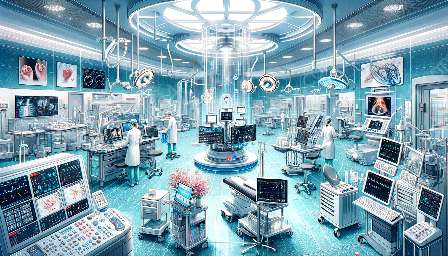Healthcare facilities rely on a wide range of medical devices to provide high-quality patient care. The process of selecting and procuring these devices is critical to ensuring patient safety, operational efficiency, and regulatory compliance. Clinical engineering plays a vital role in this process, as it involves the management of medical equipment throughout its lifecycle, from selection and procurement to maintenance and decommissioning. This topic cluster explores various aspects of selecting and procuring medical devices for healthcare facilities, with a focus on clinical engineering and the use of medical devices.
Key Considerations in Selecting Medical Devices
When healthcare facilities are considering the purchase of new medical devices, several key factors must be taken into account. These include:
- Patient Safety: The primary concern when selecting medical devices is patient safety. Devices must be thoroughly evaluated to ensure that they meet the necessary safety standards and do not pose a risk to patients.
- Clinical Needs: It's essential to assess the specific clinical needs of the facility and choose devices that align with these needs. This may include considering the types of procedures performed, patient demographics, and the overall scope of services provided.
- Regulatory Compliance: Healthcare facilities must adhere to regulatory requirements when selecting medical devices. This involves ensuring that the devices meet the necessary quality and performance standards set forth by regulatory bodies.
- Interoperability: Interoperability is increasingly important in healthcare, and medical devices must be able to seamlessly integrate with existing systems and technologies within the facility.
- Cost and Budgeting: Cost considerations are significant in the selection process. Facilities must balance the need for high-quality devices with budget constraints and long-term cost implications.
Procurement Process and Workflow
Once the selection criteria are established, the procurement process begins. This involves several stages, including:
- Needs Assessment: Identifying the specific needs and requirements for the medical devices, including input from clinical staff and other stakeholders.
- Vendor Selection: Evaluating potential vendors based on their product offerings, reputation, support services, and pricing.
- Contract Negotiation: Negotiating terms and conditions with selected vendors to secure the best possible pricing and service agreements.
- Order Placement: Placing orders for the selected medical devices and ensuring that delivery timelines are met.
- Inventory Management: Managing the inventory of medical devices to ensure that adequate stock levels are maintained, and devices are readily available for use.
Clinical Engineering and Device Management
Clinical engineering plays a crucial role in managing medical devices within a healthcare facility. This includes:
- Asset Management: Tracking the lifecycle of medical devices, from acquisition to disposal, and ensuring that devices are properly maintained and calibrated.
- Maintenance and Service: Scheduling and performing regular maintenance activities, as well as coordinating service and repairs as needed.
- Staff Training: Providing training to clinical and technical staff on the proper use and maintenance of medical devices.
- Regulatory Compliance: Ensuring that all medical devices meet regulatory requirements and that documentation and reporting are up to date.
- Technology Integration: Integrating medical devices with the broader technology infrastructure of the facility to ensure seamless data exchange and interoperability.
Regulatory and Quality Assurance Considerations
Regulatory and quality assurance considerations are paramount in the selection and procurement of medical devices. Key points to address include:
- Regulatory Standards: Understanding and complying with the specific regulatory standards and requirements that apply to medical devices in the given healthcare setting.
- Quality Management Systems: Implementing quality management systems to ensure that the selection and procurement processes adhere to industry best practices and regulatory guidelines.
- Risk Management: Identifying and mitigating any potential risks associated with the use of medical devices, as well as establishing protocols for reporting and addressing adverse events.
- Post-Market Surveillance: Establishing processes for monitoring the performance and safety of medical devices once they are in use, including adverse event reporting and ongoing quality assurance activities.
Embracing Technological Advancements
The landscape of medical devices is continually evolving with technological advancements. Healthcare facilities must remain abreast of these developments and consider:
- Emerging Technologies: Assessing the potential benefits of emerging medical technologies and their impact on patient care and operational efficiencies.
- Data Security: Ensuring that new medical devices comply with data security and privacy regulations to safeguard patient information and maintain the integrity of healthcare data.
- Remote Monitoring and Telemedicine: Leveraging remote monitoring capabilities and telemedicine solutions to enhance patient care and accessibility, where applicable.
Conclusion
Selecting and procuring medical devices for healthcare facilities requires a comprehensive approach that addresses patient safety, clinical needs, regulatory compliance, and technological advancements. Clinical engineering is integral to this process, encompassing the management of medical devices throughout their lifecycle. By understanding and implementing best practices in device selection, procurement, and management, healthcare facilities can optimize patient care delivery and operational performance.


